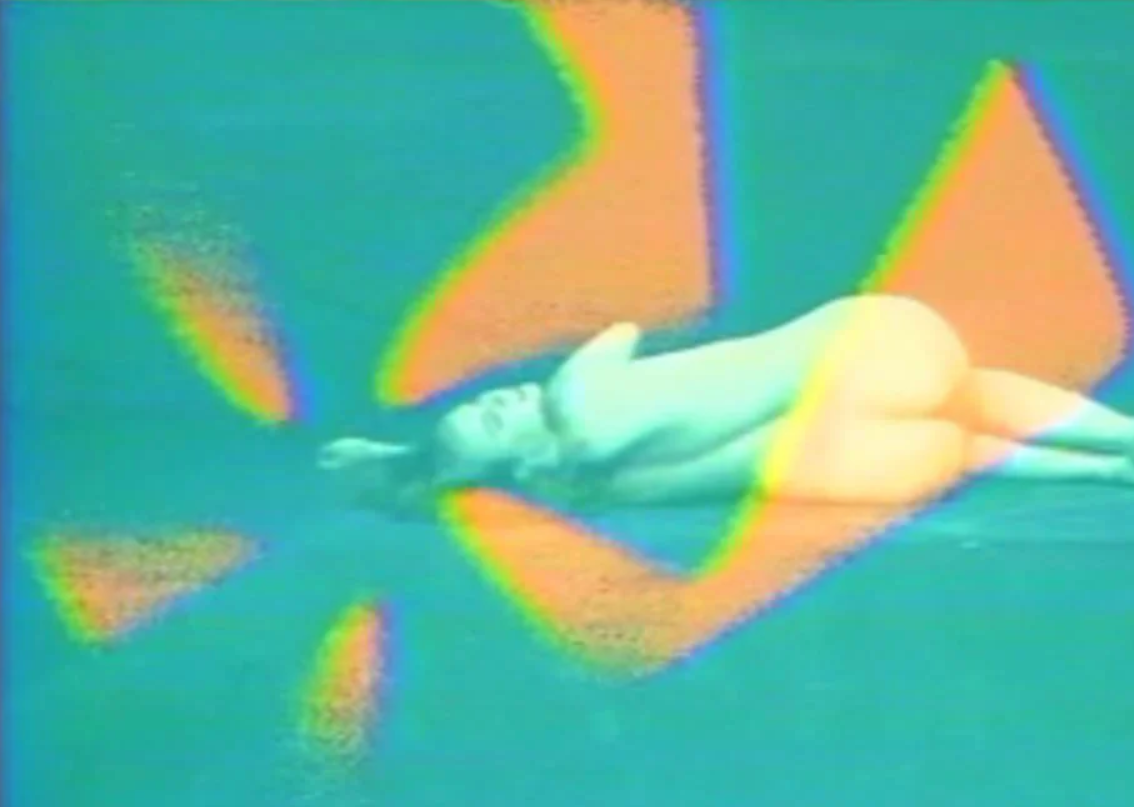Artwork analysis: Ciudad-Mujer-Ciudad
(City - Woman -City)
(1978), Pola Weiss
By: Montserrat Romero Rodríguez
Still frame. Ciudad - Mujer - Ciudad (1978), Pola Weiss
Introduction:
It is important to highlight the role of Pola Wiess within the birth of video art in Mexico. Graduated from the Faculty of Political and Social Sciences of the UNAM in 1975, she soon met the work of the Korean video artist Nam June Paik and his wife, Shigeko Kubota, who would decisively influence their work and bring it closer to the artistic movement Fluxus pretty much in vogue at that time in North America and Europe.
It is precisely with Kubota that he would share a feminizing approach to artistic creation, although obviously tending more to an artistic feminism than combative as is clear in the work of the Japanese "Video is a victory of Vagina" (1976). Already in her role as teacher in the institution that formed her, she created the arTV production company where in 1978 she produced the piece that concerns the present analysis: "Ciudad-Mujer-Ciudad" an 18-minute videotape where she presents a kind of parallelism between a woman and a city, in this case, Mexico City at the end of the seventies.
Denotative Analysis:
In a sequential structure, the video alternates images of psychedelic aesthetics, mobile blades of solid and saturated colours with manual approaches of a rural dawn accompanied by environmental sounds, of water, birds and the laughter of a child, then the music takes us to the sequence of a bus stop on a city morning, during the transitions you can observe the progressive presentation of the body of a naked white woman through the chroma key effect, (extracting one colour and replacing it with another image, giving an effect of transparency) until finally a voice (in off) female of capital accent speaks on the water and under her a melody of flute enters, to the time that the woman dances following to the rate while different takes of the Mexican capital appear: the Alameda, the Axis Central, the Zócalo, the Palace of Fine Arts among others, until being subtly covered by the female figure and the coloured blades, the sound of some Bells cut the sequence and the voice-over in high pitch speaks of air and trash. The rhythm changes towards the percussions and the dance of the woman is accelerated on shots of avenues, traffic and people, the voice still higher speaks of the haste and the oppressiveness of the time, until ending in a climax, with a shout and the framing of the genitals of women. The music changes to a relaxed tune, the woman lies asleep on nocturnal images of the city. The lights of the cars are interrupted by music that imitates the African rhythms and a zoom-out reveals to the woman what if she was crucified (like the Christian images) on a psychedelic background, the figure moves away until getting lost. Finally, the credits appear and the music changes for the last time.
Connotative Analysis:
Although it does not pose an environmentalist discourse as such, if it presents an interesting comparison between a destroyed and dirty city with a woman suffering and "wounded", she compares the loss of water with her cries, the dirty and contaminated air with her dry breathing. It also highlights the sense of haste and oppression that lives in the city, a rhythm that prevents living "everyone runs as if they were alone" likewise the demand of "being" in the middle of a whole that oppresses, finally giving a sense of martyrdom, hence the crucifixion that closes the work.
As mentioned before, Kubota's influence is clear, specifically in the sense of the instrumentalization of the camera as a tool for empowerment, and even as Sepulveda (2015) states, artistic production is conceived as an obviously maternal act. Although not radicalized in the matter, Weiss presents an image of the female body somewhat discordant with the canon of his time, as well exemplifies the body of the actress of this piece, Vivian Blackmore.
Technically, highlights the work of editing, especially if you consider that many of the effects and distortions were achieved by simply adjusting the camera settings, which Weiss called "vidEFECTS". In its structure for Acha (1978) is a work closer to the film because it has a fairly clear start and end, while Escobedo (2015) ensures that the video is built on a classic diegetic mould (space, time and characters).
Bibliography:
ESCOBEDO, Teolinda (2015) “Historiografía del Videoarte Mexicano a través de un Recorrido de Tres Décadas de Producción” Tesis Doctoral. México: Universidad de León.
TORRES Ramos, Edna (1997) “El Videoarte en México. El caso de Pola Weiss” Tesis de Licenciatura. México: UNAM http://polaweiss.mx/biografia.html. Consultado 07 de octubre de 2018
